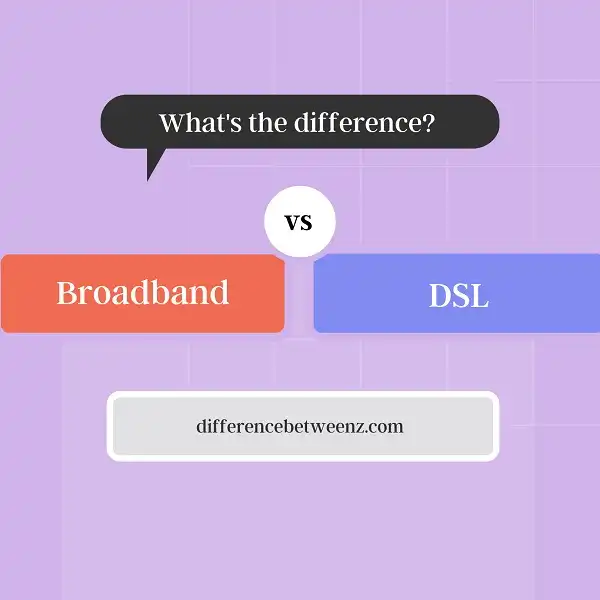Broadband and DSL are two of the most common types of internet connections. But what’s the difference between them? In this post, we’ll break it down for you.
What is Broadband?
A broadband is a type of high-speed internet connection that allows users to access and download large amounts of data quickly and efficiently. Broadband utilizes a variety of transmission technologies, including cable, DSL, fiber optic, and wireless connections, which provide varying levels of speed and reliability. Different types of broadband are suitable for different kinds of data usage and applications. For example, the cable may be best suited for streaming video content, whereas DSL is ideal for gaming or heavy internet browsing. Broadband has become an essential part of modern life, allowing users to stay connected and informed in a rapidly changing world. Whether we are checking our email, streaming movies online, or just surfing the web for fun, broadband gives us the bandwidth we need to do it all.
What is DSL?
DSL, or Digital Subscriber Line, is a type of high-speed internet connection that uses copper telephone lines to deliver data. DSL service is provided by many internet service providers and is typically bundled with home phone service. DSL offers speeds that are much faster than those of traditional dial-up connections, making it a popular choice for consumers. However, DSL speeds can vary depending on the distance from the telephone exchange. DSL is also affected by weather conditions and other factors that can affect the quality of the copper telephone lines. For these reasons, DSL is not always the best option for businesses that require a reliable and consistent connection. However, for most home users, DSL provides a fast and affordable way to connect to the internet.
Difference between Broadband and DSL
Broadband and DSL are two types of high-speed internet connectivity that are commonly used by consumers today. Broadband typically refers to a type of connection that utilizes a physical medium, such as cable or fiber optic cables, to provide fast download and upload speeds. On the other hand, DSL is a form of broadband in which the signal uses the copper wire that is already present in phone lines. While both Broadband and DSL offer similar ranges of download and upload speeds, there are some subtle differences between them. Broadband tends to be faster overall, but it can be more expensive than DSL, which may appeal to cost-conscious consumers. Additionally, Broadband connections offer higher reliability and lower latency than DSL connections, making them ideal for users who need consistent, high-quality performance for their online activities. Overall, Broadband and DSL are similar technologies that cater to different needs depending on individual preferences and usage scenarios.
Conclusion
DSL is a technology that is quickly becoming obsolete. If you are still using DSL, it’s time to upgrade to a broadband connection. Broadband connections are faster and more reliable than DSL connections. Not only will your internet be faster, but you will also have access to more bandwidth, which means you can use the internet for more activities at the same time.


